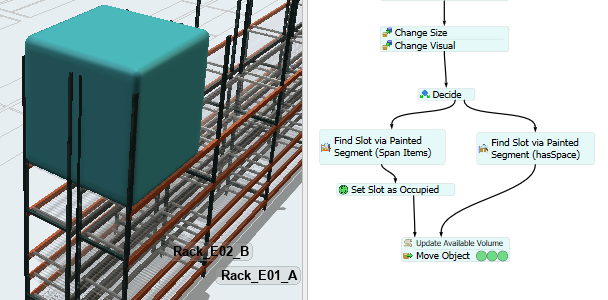Since a slot's depth cannot be independently specified and the 'y' value controls the entire rack's depth, what are some possible approaches in modeling systems where large items are stored by spanning adjacent racks?
For example, if there are 2 racks back-to-back with unique items stored respectively in each rack's lower levels, how do you model large items being stored on the top level that span across both racks?...

We also have situations where items are spanned at lower levels.
If a slot's depth could be independently controlled, you could specify the required depth for Rack A's slot and then set Rack B's corresponding slot as not storable.
I'd appreciate any ideas on how to approach this. Thanks - Stan

